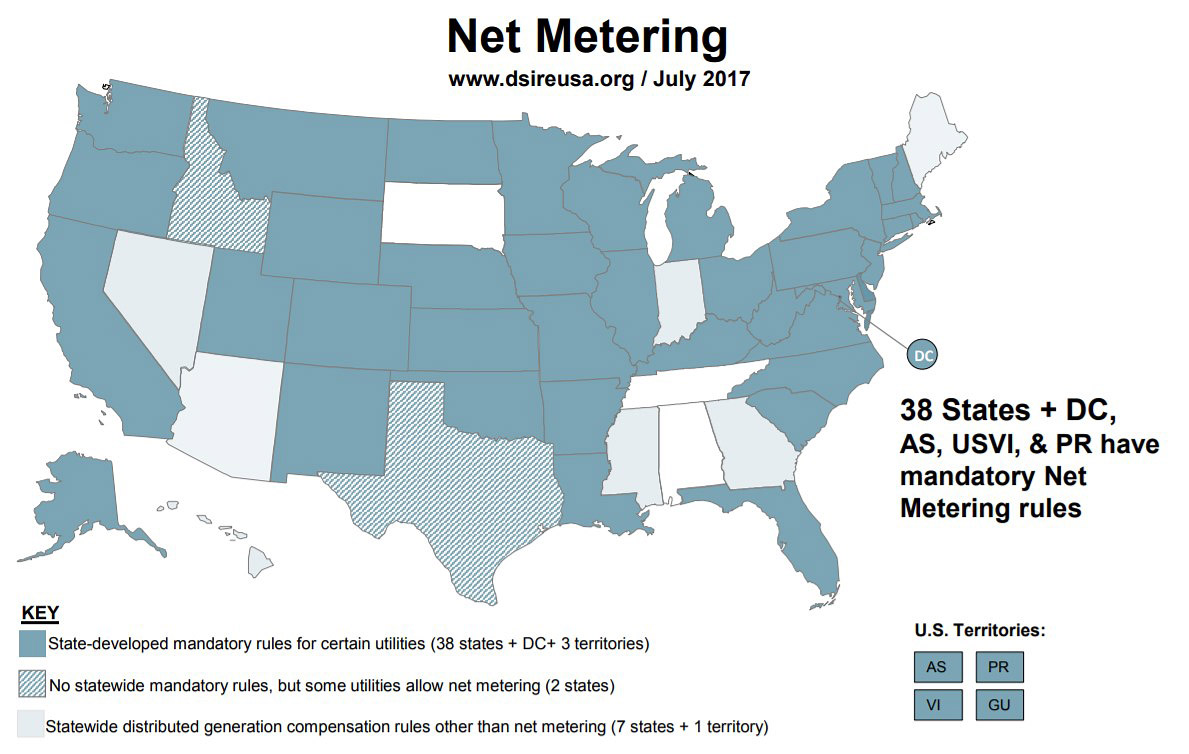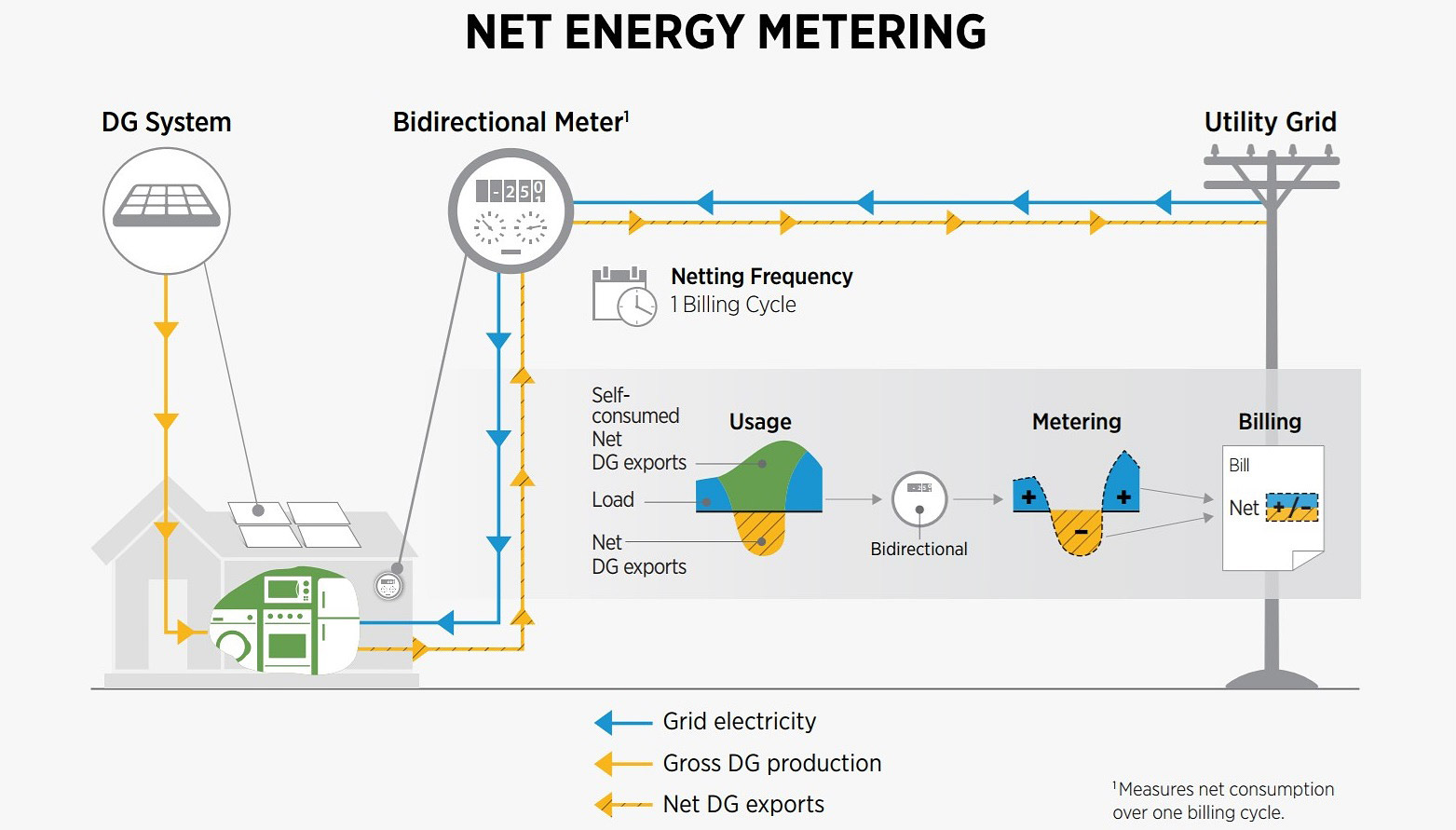Back to Basics: Unraveling How Distributed Generation is Compensated and Why It's Important
Nov. 28, 2017 by Alexandra Aznar
Amid the surge of recent net-metering evaluations and proposed program changes at the state level (e.g. Nevada, Utah, New York), it can be useful to step back and consider some fundamental issues at play. What is net metering?—seems like such an easy question to answer, but there is a surprising amount of diverse terminology and parlance surrounding this concept.
Net energy metering (NEM) is an arrangement for metering and billing customers with distributed generation (DG). Metering & billing arrangements are key components of compensation mechanisms which reward DG system owners for the electricity they self-consume and/or export to the grid. A DG system owner’s full compensation also depends on retail rate design (i.e., how much a customer pays for electricity from the grid) and sell rate design (i.e., how much a customer receives for electricity exported to the grid) (Figure 1).

Figure 1. Components of compensation mechanisms
(Source: Zinaman et al, 2017.)
NEM is the most common compensation mechanism used in the United States, available in 44 states and Washington D.C. (Figure 2). Around the world, however, a variety of compensation mechanisms are employed (Figure 3).

Figure 2. Availability of net energy metering in the U.S.
(Source: DSIRE, 2017)

Figure 3. Compensation mechanisms worldwide (examples are illustrative)
*FIT denotes Feed-in-tariff, another name used for buy all, sell all.
(Source: Rodrigues S., et.al (2016) Economic feasibility analysis of small scale PV systems in different countries. Solar Energy.; BNEF.)
In a recently released report, Grid-Connected Distributed Generation: Compensation Mechanism Basics, Zinaman et al. argue that there are essentially three types of metering & billing arrangements: net energy metering; buy all, sell all; and net billing. Distinctions among the three mechanisms are highlighted in Table 1.
Table 1. Basic elements of three different metering and billing arrangements
|
Net energy metering |
Buy all, sell all |
Net billing |
|---|---|---|
|
|
|
Source: Zinaman, et al, 2017
The paper walks through each of these metering and billing arrangements thoroughly, detailing the benefits and challenges of each and providing helpful graphics (Figure 4) that show energy flows between the DG customer and the grid.

Figure 4. Schematic of Net Energy Metering
(Source: NREL, 2017)
So, why does understanding these distinctions matter for state public policymakers? For one, policymakers can specify which metering and billing arrangements will be offered in their states, or they can provide guiding principles to utilities and regulators to decide. Choosing a single metering and billing arrangement is not the only option—policymakers, regulators, and utilities can provide multiple options to customers, specific arrangements to certain customer classes and/or DG system sizes, and set limits on overall participation in a program.
Policy makers also have a role in setting sell rates for buy all, sell all and net billing arrangements. Setting a sell rate wades into determining the value of distributed generation. Do sell rates above the retail rate over-compensate DG customers for their electricity exports? Do sell rates below the retail rate under-compensate DG customers? The answer depends on many factors including both the location on the grid and the time of day the excess electricity is exported, but in general, it is still not well understood. Sell rates, as part of compensation mechanisms, influence the level of DG deployment, which in turn has financial implications for utilities and ratepayers (see “Who is affected when a customer installs DG?).
As these examples show, policy makers can make crucial decisions about compensation mechanism design that have a real-world impact on solar markets and deployment. Understanding the distinctions and design elements of different metering and billing arrangements is paramount and new resources, like the paper highlighted in this blog, can provide clarification and guidance.
Share

